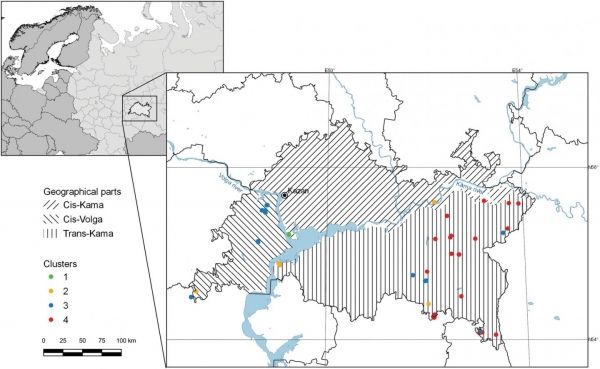Scientific classifications of forest vegetation on the territory of the former USSR, including the Republic of Tatarstan, previously used the dominant approach, traditional for northern countries, taking into account the dominance degree of one or another species in the main tree layer, or similarity in the composition of subordinate layers with the identification of cycles and series of associations. Currently, the classification of plant communities of the Republic of Tatarstan is made on a dominant-determinant basis and is reflected, for example, in the vegetation map of the Atlas of the Republic of Tatarstan and other publications.
The classification of vegetation according to the Braun-Blanquet method takes into account the entire floristic composition of the community and is used mainly in European countries. Since many communities in the European part of Russia are similar to European ones, it is logical to classify our communities in this system as well. In Soviet phytosociology, the Braun-Blanquet system began to be actively used only in the early 1980s, and since 2000, the Russian followers of Braun-Blanquet have authored dozens of articles on vegetation in different regions. In 2005, a preliminary prodromus of vegetation syntaxa of the Raifa site of the Volga-Kama natural biosphere reserve was published.
Therefore, the authors decided to develop a classification of plant communities in the Republic of Tatarstan based on the Braun-Blanquet system.
Read more at: Kazan Federal University
Study area and plot location (Photo Credit: Kazan Federal University)


